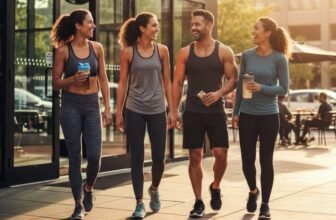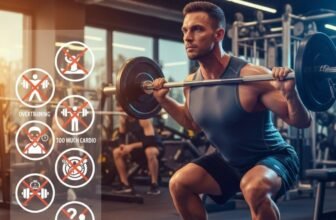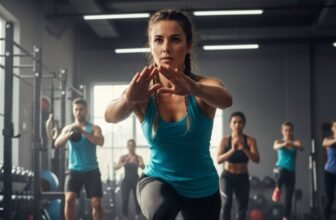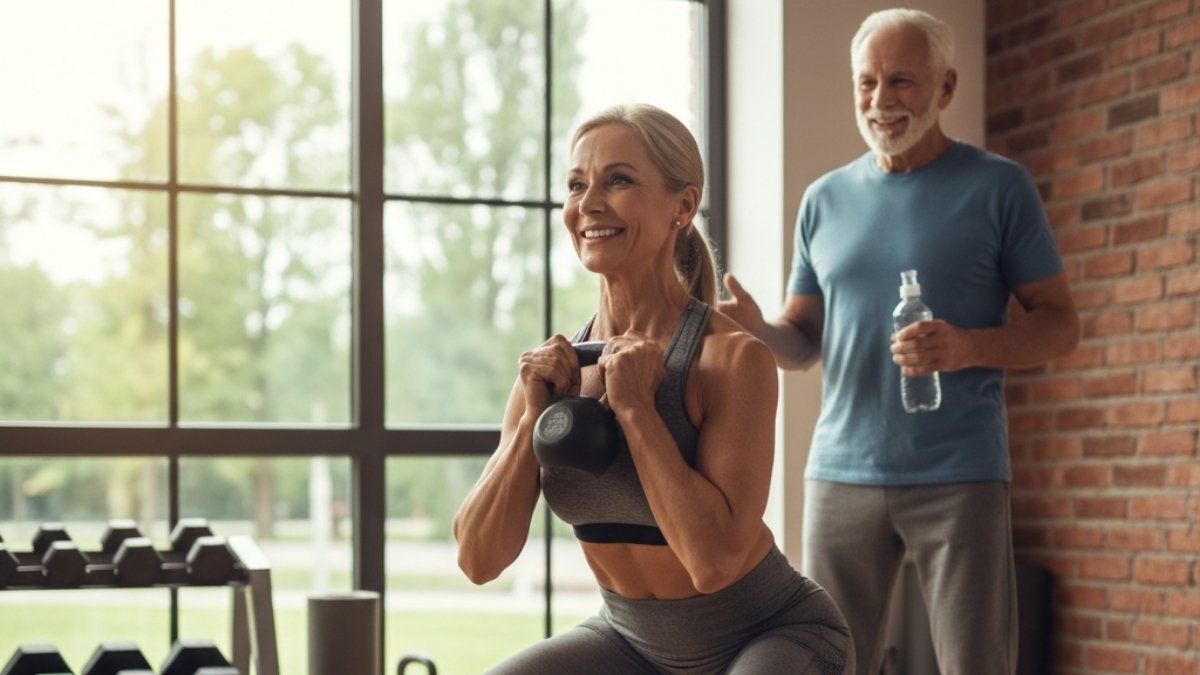
For most of my life, I thought “exercise” meant one thing: cardio.
You probably did too, right? We all grew up in the era of aerobics. We watched Jane Fonda in leotards, we were told to jog for our hearts, and our doctors measured our health by our blood pressure and cholesterol. The official guidelines from groups like the American College of Sports Medicine, way back in 1978, were all about endurance. If you mentioned “weightlifting,” people pictured bodybuilders on a stage, and for decades, many doctors even warned that it was dangerous.
But what if we all missed the most important part?
A massive shift has happened in medicine, and it’s completely changing our understanding of how to live a long, healthy life. While your heart is still critical, it turns out there’s another, more powerful predictor of healthspan that’s been hiding in plain sight: your skeletal muscle.
Longevity expert Dr. Peter Attia, author of Outlive, is one of the loudest voices in this new field. He calls exercise the “most potent longevity ‘drug’ in our arsenal,” and he notes that data on muscle mass and strength show “a much higher association [with longevity] than things like even cholesterol and blood pressure.”
This isn’t just a fitness trend. It’s a “metabolic rebranding” of your entire body. We’ve moved from focusing just on the “engine” (your heart and lungs) to understanding the “chassis” (your entire muscular system). We now have piles of evidence showing that low muscle mass is directly linked to a higher risk of dying from all causes, proving that the “secret” to a healthy life was right there, making up the largest organ system in our body. We just misunderstood what it was for.
Your Muscle Is a “Smart Organ” That Talks to Your Body
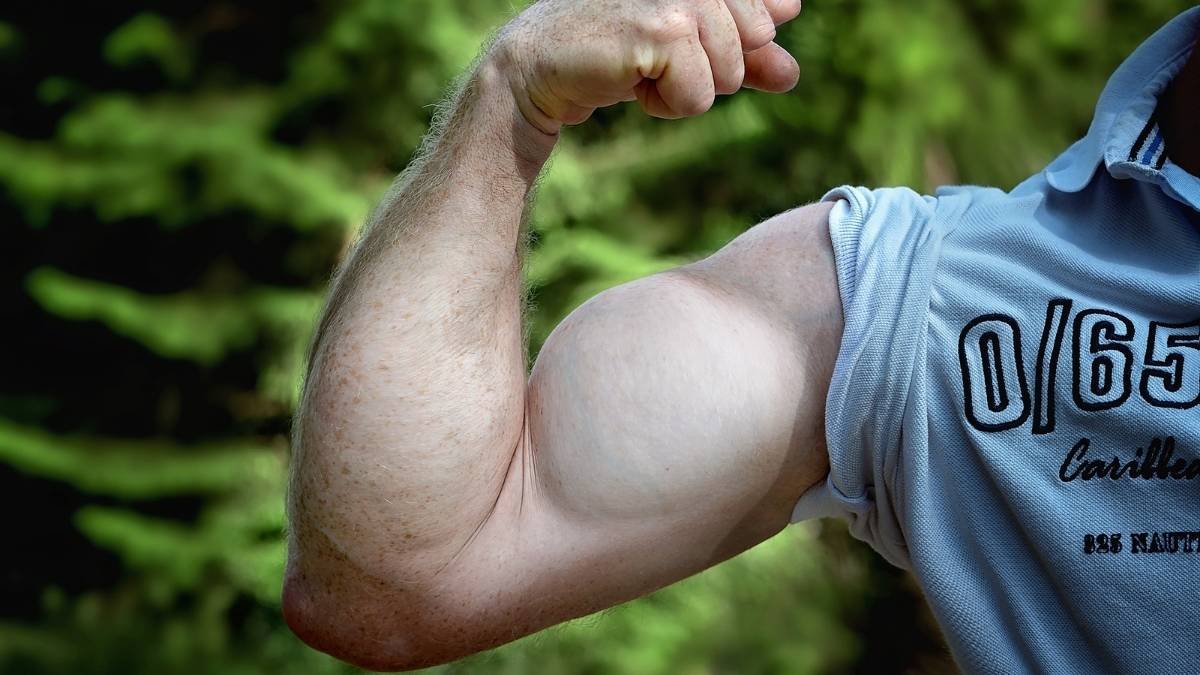
Here’s the part that blew my mind when I first learned it. Your muscle isn’t just “dumb” tissue you use to open jars or climb stairs.
It’s an endocrine organ.
That’s right. Your muscles are a “smart organ,” almost like a gland. When you contract a muscle—whether it’s lifting a grocery bag or doing a squat—it releases these incredible little messengers into your bloodstream called myokines.
Think of it this way: your muscular system is a busy, active “pharmacy.” Every time you use it, it sends out “prescriptions” that tell the rest of your body how to get healthier. This “crosstalk” system is one of the most powerful forms of medicine you have.
These myokines, released during exercise, go everywhere and do just about everything:
- Brain Health: They can cross the blood-brain barrier, helping to improve cognition and lower your risk of dementia.
- Metabolic Health: They tell your body how to handle fat and sugar, and can even help “brown” your white fat, turning it from storage fat into metabolically active fat.
- Bone Health: They send signals to promote bone formation, which is our best defense against age-related bone loss.
- Immune Function: They have a powerful anti-inflammatory effect and are even being recognized for their role in suppressing tumor growth.
This one idea changes everything. It means a bicep curl isn’t just for your arms, and a squat isn’t just for your legs. That simple contraction is an act of systemic medicine, releasing substances that protect your brain and fight disease. This is why building and using muscle is a medical necessity.
Your Body’s “Glucose Sponge”: The Antidote to Blood Sugar Spikes
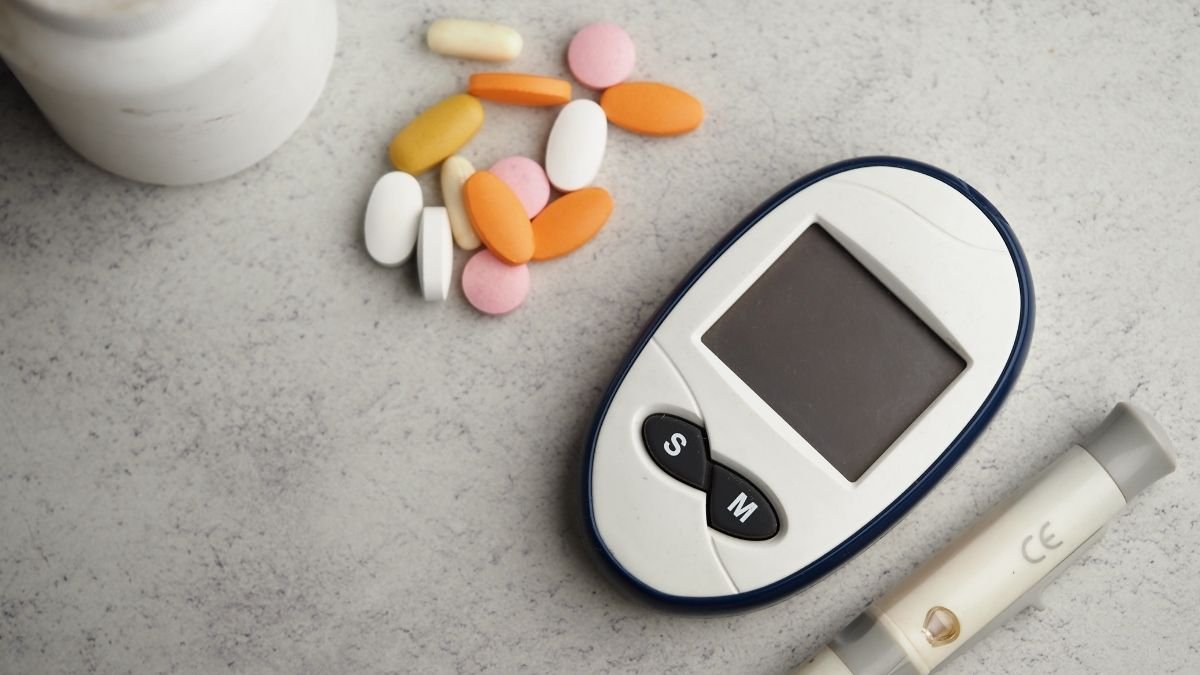
Beyond being a pharmacy, your muscle has another job that is absolutely critical for longevity: it manages your blood sugar.
Let’s talk about something that worries a lot of us: metabolic health and type 2 diabetes. Your skeletal muscle is the single largest organ in your body by mass, and it is the primary regulator of your blood sugar.
Get this: your muscles are responsible for “soaking up” over 80% of the glucose (sugar) from your bloodstream after you eat.
When you lose that muscle, you lose your primary tool for managing blood sugar. It’s no surprise, then, that low muscle mass is strongly linked to insulin resistance and a staggering 188% greater prevalence of type 2 diabetes in people with muscle loss.
In Simple Terms: How This Works
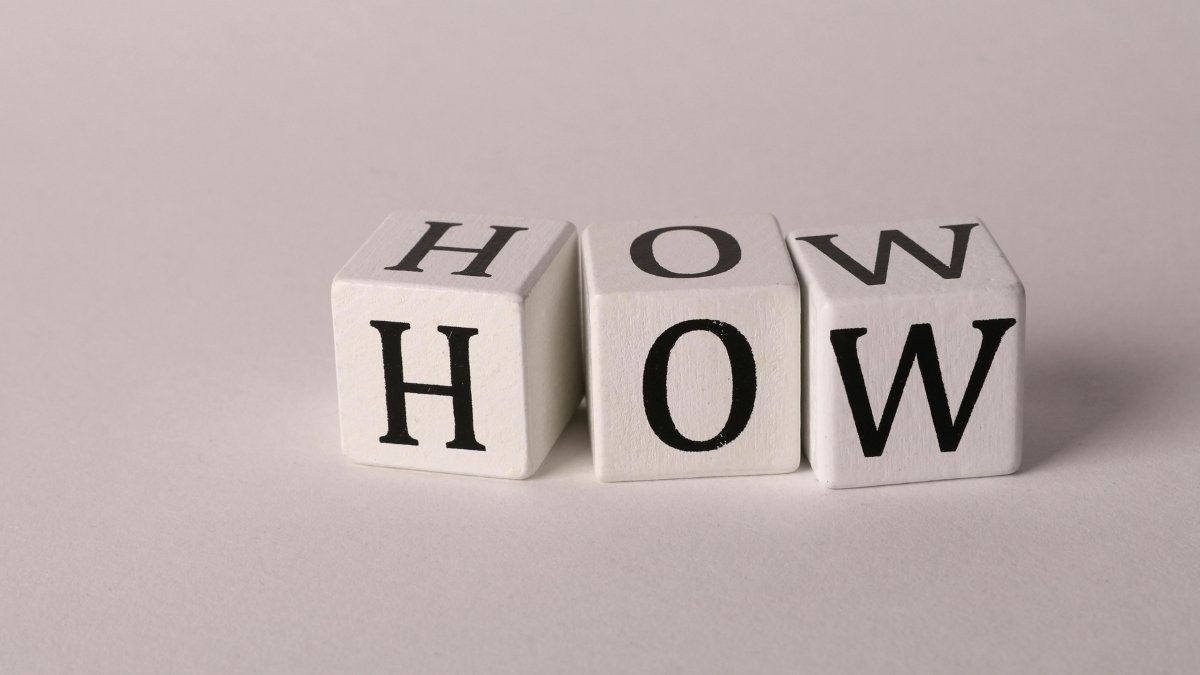
It’s actually pretty simple. Let’s use two analogies.
- The “Lock & Key” Analogy: After you eat, your blood sugar rises. Your pancreas releases insulin, which is the “key.” That key travels to your muscle cells and fits into a “lock” (an insulin receptor) to open the “door,” letting the glucose in. Insulin resistance is what happens when that lock gets “gummed up.” The key doesn’t work, the door stays shut, and all that glucose gets stranded in your bloodstream.
- The “Glucose Sponge” Analogy: Think of your muscle as your body’s main “glucose sponge.” It’s where you store about 75% of your body’s available glycogen (stored glucose). Having more muscle is like having a bigger sponge. It gives you a bigger, safer place to put all that sugar.
And here’s the magic trick. Exercise.
When you contract a muscle, it creates a second doorway for glucose to get in, one that doesn’t even need the insulin “key.” 16 It’s like you get to “wring out the sponge,” making it thirsty and able to soak up all that extra glucose, completely bypassing the “broken lock” of insulin resistance.
This is huge. It means that for anyone worried about prediabetes or type 2 diabetes, the simple mechanical act of using your muscles is one of the most powerful tools you have to control your blood sugar, even when the hormonal system (insulin) is struggling.
The Silent Thief: Sarcopenia Is the Metric You Need to Watch
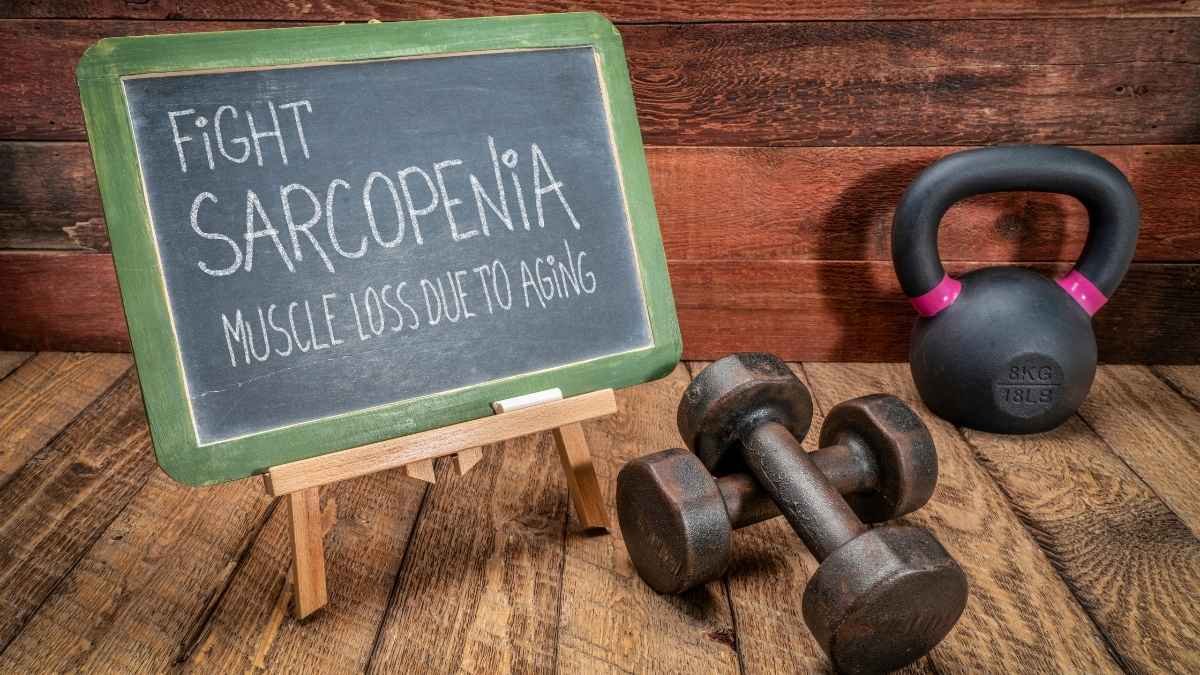
So, if muscle is the hero, what’s the villain?
It’s a condition called sarcopenia (you’d say it sar-ko-PEE-nee-ah). It’s just a fancy medical term for the age-related, progressive loss of both muscle mass and strength.
This is the biological driver of frailty, falls, and fractures. It’s the reason this whole process is so insidious. It starts way earlier than you think.
“Starting as early as age 30, we all begin to gradually lose muscle mass,” says Dr. Jack M. Guralnik. It’s slow at first, but it speeds up. By age 70, an individual may have lost 45-50% of their peak muscle mass. 21 This silent loss is why about 30% of adults over age 70 report having trouble with basic functional tasks—like walking, climbing stairs, or just getting up from a chair. And it’s linked to higher rates of heart disease, pulmonary disease, and arthritis.
What’s even more dangerous is a hidden condition called sarcopenic obesity. This is a “toxic feedback loop” of having both low muscle mass and high fat mass at the same time. This combination is far riskier than just having obesity or sarcopenia alone.
This is why we need to stop focusing only on the number on the scale and start focusing on our strength. You can have a “normal” BMI and still be dangerously “under-muscled.” For your longevity, the most important metric isn’t your weight; it’s your strength.
But… I’m Worried. Debunking 3 Myths That Keep Us Weak
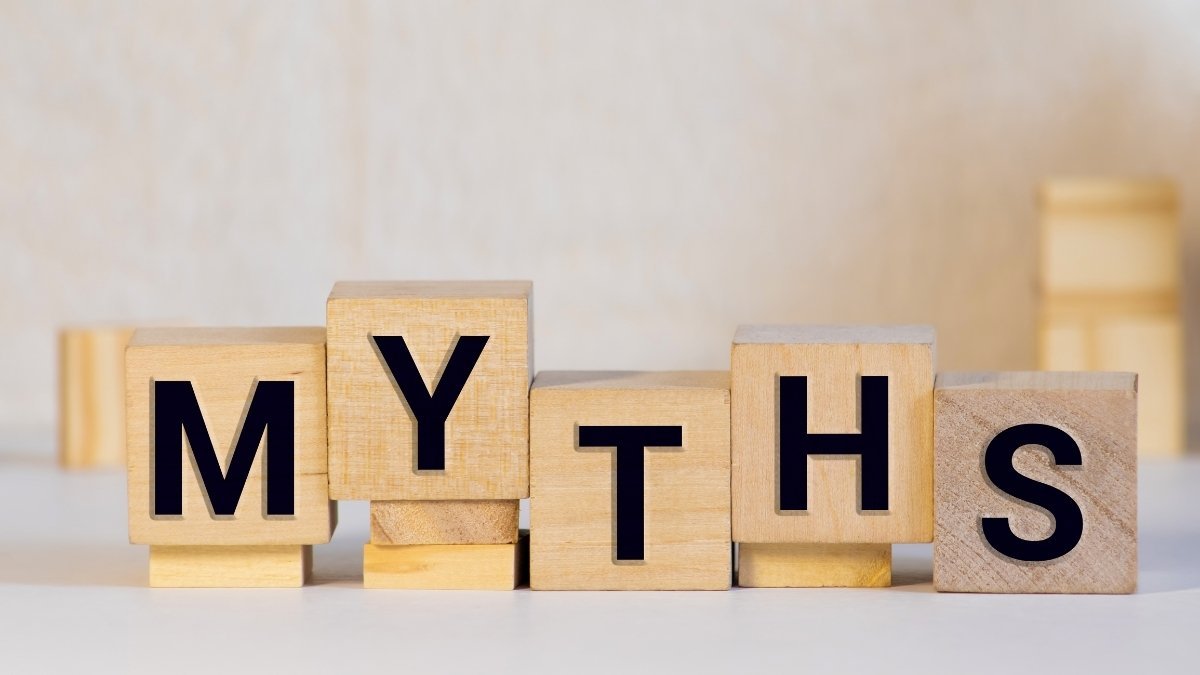
Okay, the evidence is clear. But I know what you’re thinking, because 80% of adults don’t do any regular strength training. It’s usually because of these three myths.
Myth 1: “Lifting weights will make me bulky.”
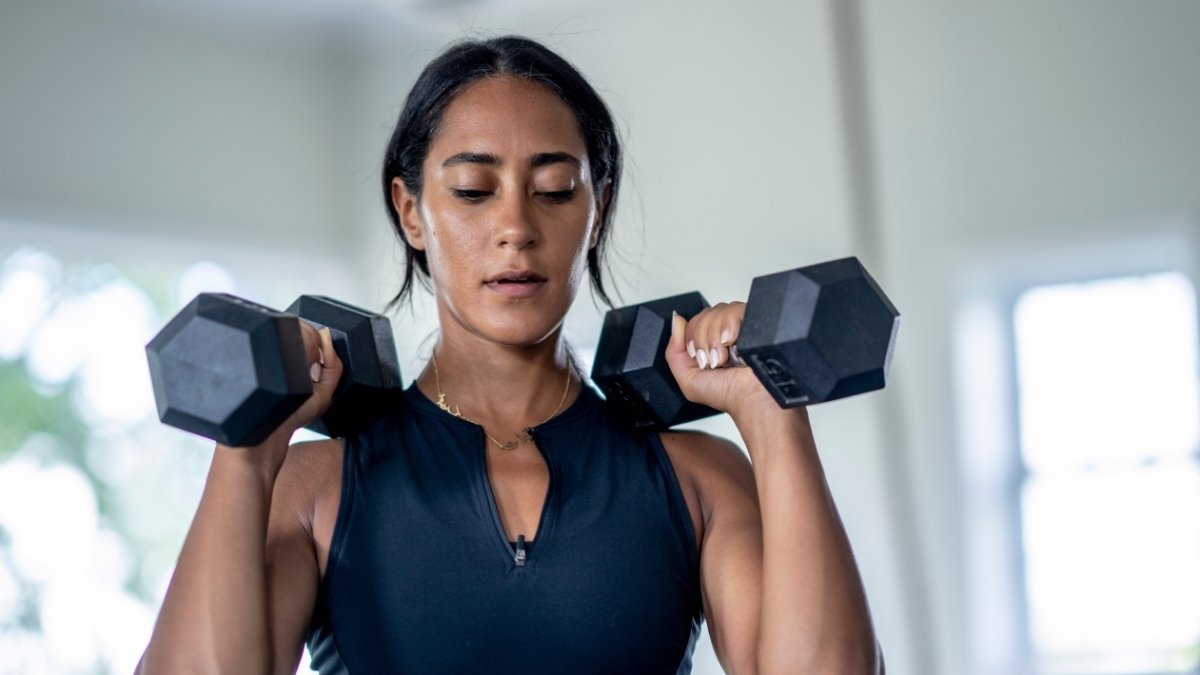
I know, I know. This is, hands down, the biggest fear, especially for women. And it’s completely physiologically wrong.
Getting “bulky” is really hard. It requires a specific kind of training, a massive and sustained calorie surplus, and, frankly, high levels of testosterone.
As Jim Beitzel, ATC, of Northwestern Medicine, explains, “Women do not have the same level of muscle-bulking testosterone as men… Women merely adding strength training while eating a nourishing, balanced diet will [get] leaner, stronger and fit.”
In fact, research from exercise physiologist Dr. Stacy Sims shows that women’s adaptations to strength training are often more neural—you get better at “talking” to your muscles. The result? You get “a stronger, more powerful contraction with less muscle bulk.” You don’t get “bulky”; you get strong and “toned.”
Myth 2: “Strength training is bad for your joints.”
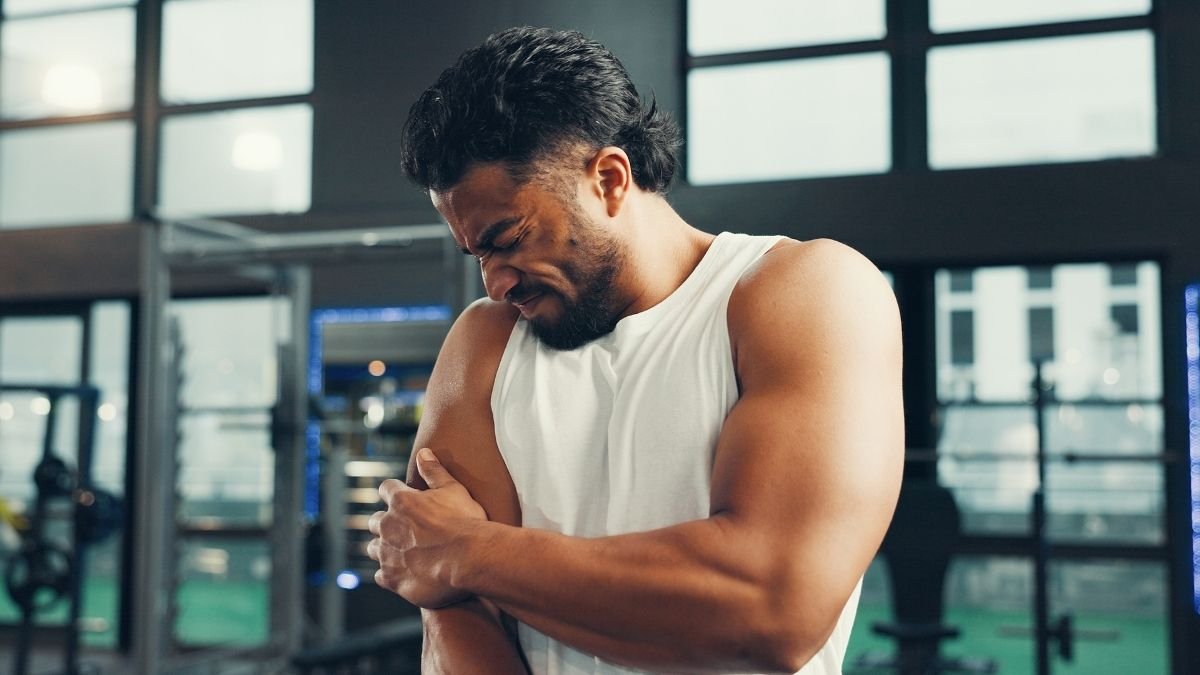
This one is not only false, it’s dangerously backward.
Inactivity is what’s bad for your joints. A lack of use makes joints “more stiff, painful and prone to injury,” as experts from the Arthritis Foundation note.
When you do it right, strength training is protective. It builds the entire support structure—all the muscles, tendons, and ligaments—that act like a natural, living brace to stabilize and protect the joint.
And for the millions who already have osteoarthritis (OA)? Exercise is now considered an essential part of treatment by the CDC, WHO, and American College of Rheumatology. A 2024 systematic review and meta-analysis confirmed that resistance training is effective in improving pain, strength, and function in patients with knee and hip OA. In fact, research shows that muscle weakness is a factor that makes OA worse.
Myth 3: “Cardio is all that matters for longevity.”
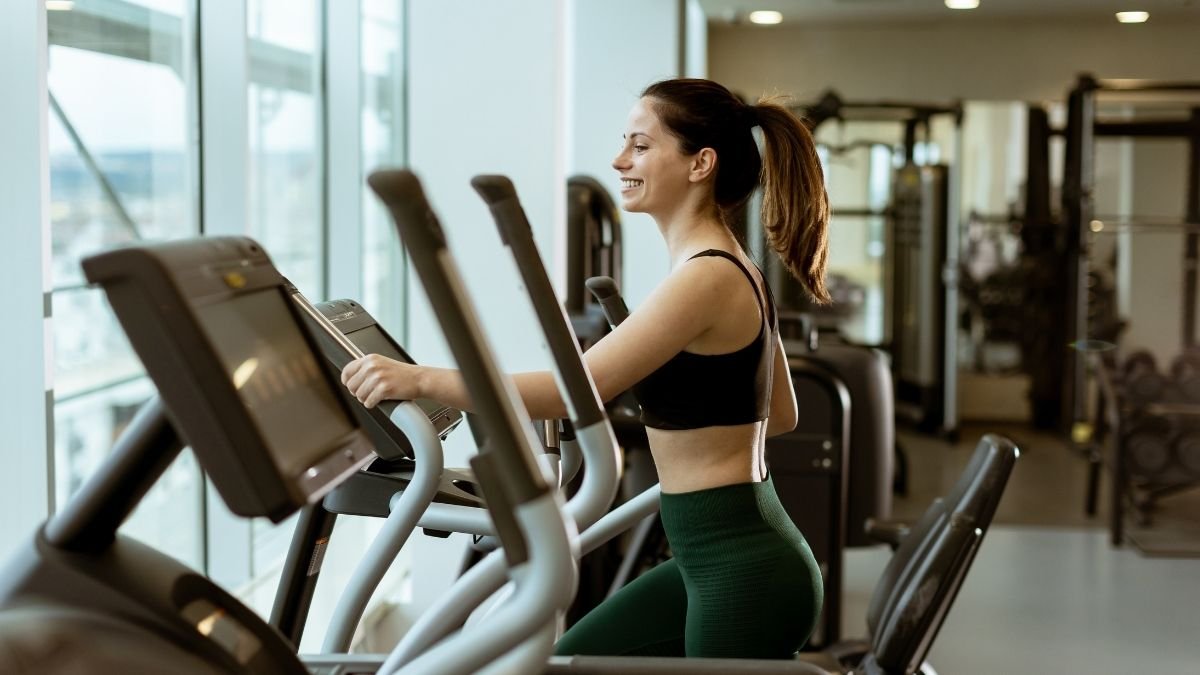
This is the false choice that got us here. It’s not one or the other. Cardio is vital, but it doesn’t stop sarcopenia. Strength training does.
The magic happens when you combine them.
A major 2022 meta-analysis in the British Journal of Sports Medicine laid it out perfectly. They looked at the risk reduction for dying from any cause:
- Aerobic Activity Only: 24% to 34% decreased risk
- Strength Training Only: 9% to 22% decreased risk
- Combined (Aerobic + Strength): 40% decreased risk
You need both. Cardio trains the “engine” (your heart and lungs). Strength training builds and maintains the “chassis” (the functional, metabolic machinery that uses fuel and interacts with the world). A long life requires both a strong engine and a durable chassis.
The 1 Lift to Start With: The Squat
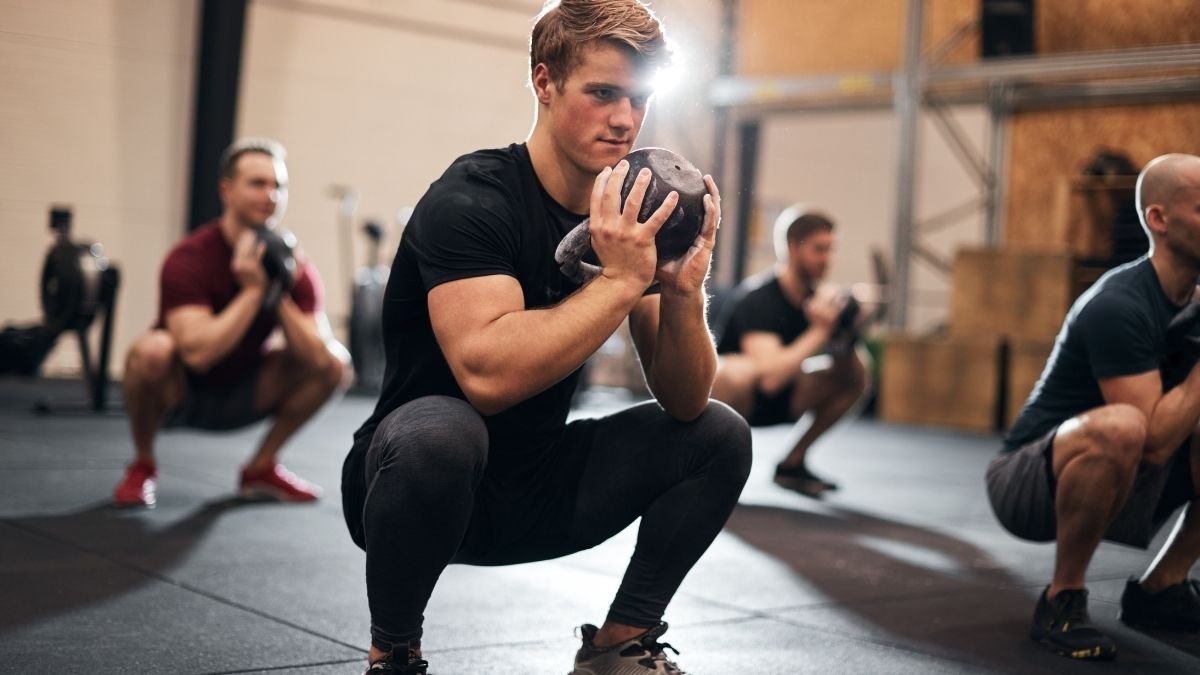
So, where do we start? The U.S. Department of Health and Human Services just says to do strength training for all major muscle groups at least twice a week.
That still sounds vague and kind of overwhelming. So let’s simplify it. For the beginner, let’s pick one single, foundational movement: the squat.
Why the squat? Because it’s one of the seven fundamental human movement patterns. Its real value isn’t what it does in the gym; it’s what it allows you to do in life.
As one physical therapist explains, “Anytime you get up from or sit down on a chair or toilet, you are basically doing a squat.” It’s the movement you need to play with your grandkids on the floor, pick up a heavy bag of dog food, or retrieve something you dropped without throwing out your back. It is the definition of functional strength.
Its “return on investment” is massive because it’s a compound exercise. It trains hundreds of muscles all at once, from your legs to your core.
Your 3-Level Roadmap to the Perfect Squat
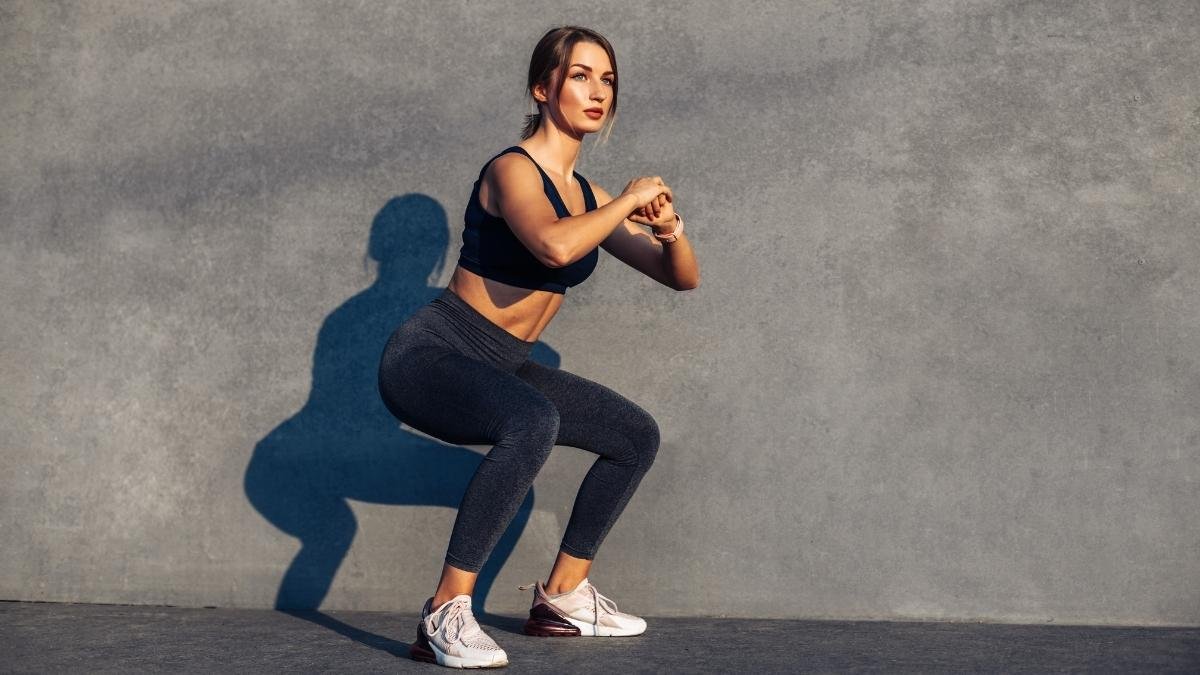
The squat is king, but most beginners do it wrong, which is what starts the “it hurts my knees” myth. The key is to learn the pattern safely. This 3-level plan starts with the safest possible version and builds from there.
Level 1 (The Foundation): The Chair Squat
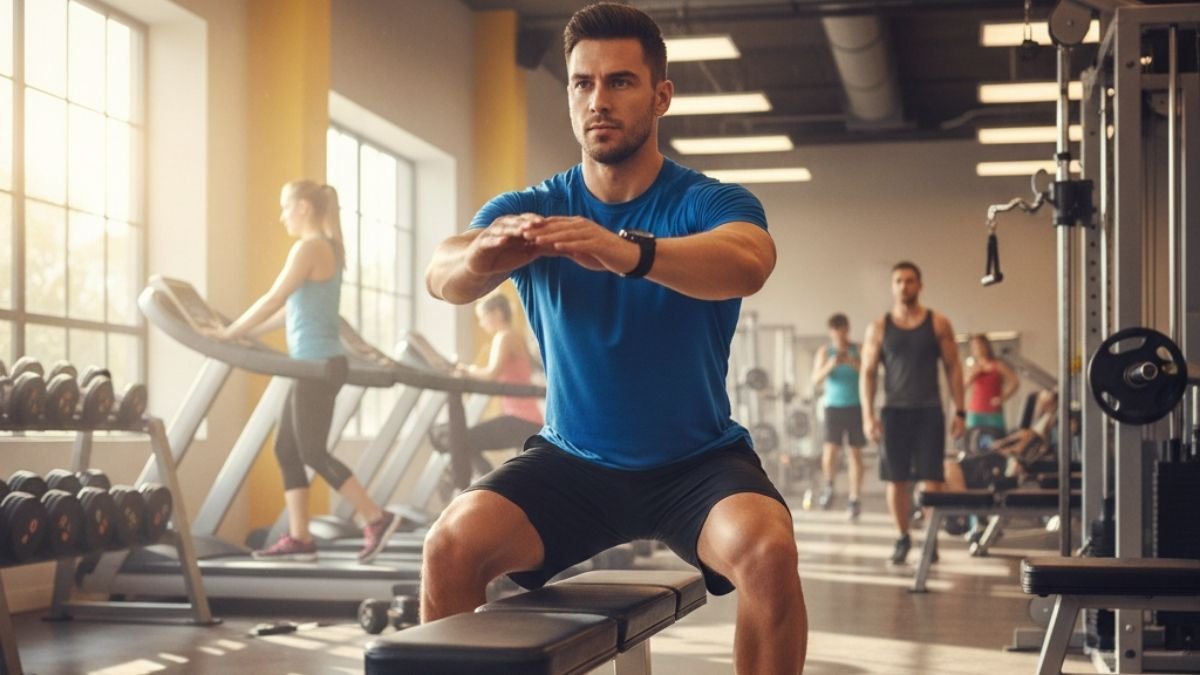
- Who It’s For: The absolute beginner, anyone with balance concerns, or older adults who want to regain that “getting up from the chair” strength.
- The Goal: To safely train the hip hinge—the “butt back first” motion—which is the secret to a safe squat.
- How-To Guide:
- Stand with your back to a sturdy chair (like a dining room chair), feet about hip-width apart. You can even hold onto another chair in front of you for balance.
- Keep your chest “proud” and look straight ahead.
- Initiate the movement by pushing your hips and butt backward first (like you’re reaching for the chair with your butt).
- Then, bend your knees to lower yourself down with full control.
- Gently touch the chair seat. Don’t plop down and relax.
- Drive your heels into the floor and stand back up, squeezing your glutes at the top.
- To make it easier: Stack a few firm pillows on the chair. This reduces the depth and builds confidence.
Level 2 (The “Mistake-Proof” Lift): The Goblet Squat
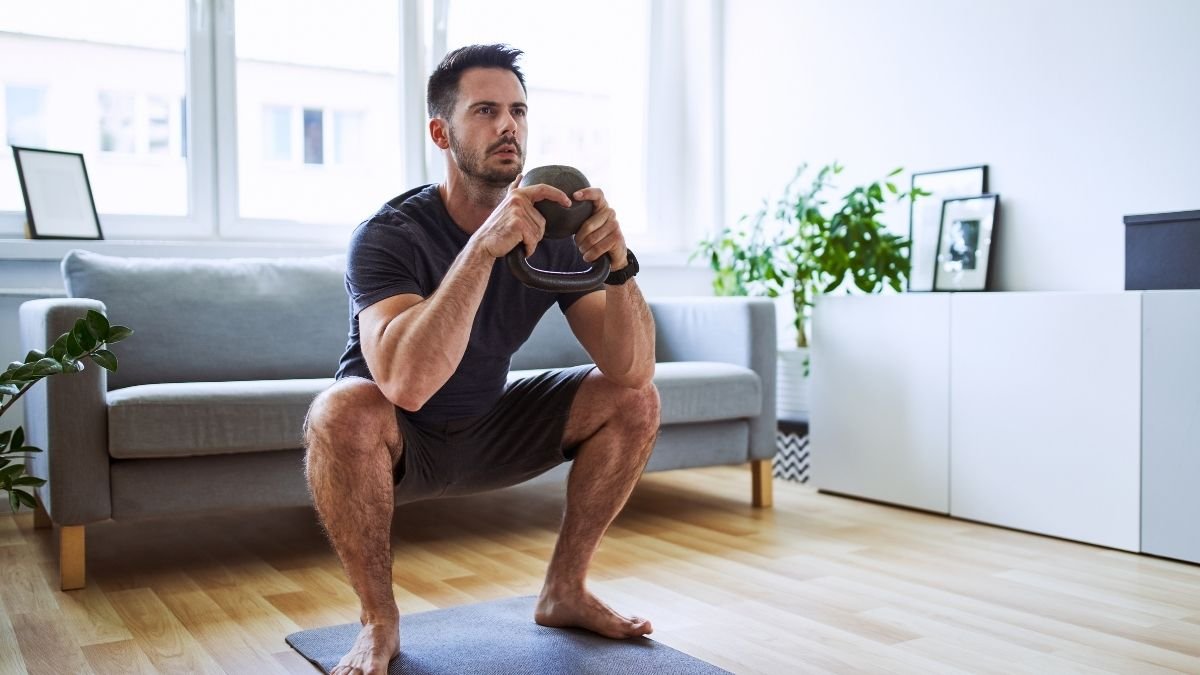
- Who It’s For: Honestly? This is the #1 lift I think every single beginner should learn.
- The Goal: To use a light weight not as a burden, but as a self-correcting tool to perfect your squat form.
- The Context: This lift was invented by strength coach Dan John, who calls it the “Goblet Squat Fixes All” and has said, “I think goblet squats are all the squatting most people need.”
- How-To Guide:
- Hold a single dumbbell or kettlebell vertically. Cup the top end with both hands and hold it right against your chest, like you’re holding a heavy goblet.
- Stand with your feet shoulder-width apart, toes pointed just slightly out.
- Keep that weight “glued” to your chest. This acts as a counterbalance and automatically forces your torso to stay upright, fixing the “rounded back” mistake.
- Descend by sitting your hips back and down, as if you’re sitting between your feet.
- As you lower, actively push your knees out and let your elbows track inside your knees. This is the magic cue. It physically prevents your knees from caving in, which is the most common and dangerous mistake.
- Go as low as you can while keeping your back straight and your heels flat on the floor.
- Drive through your feet to stand back up.
This lift is the answer. It’s a “teaching” exercise that builds the correct form while you do it.
Level 3 (The Classic): The Bodyweight Air Squat
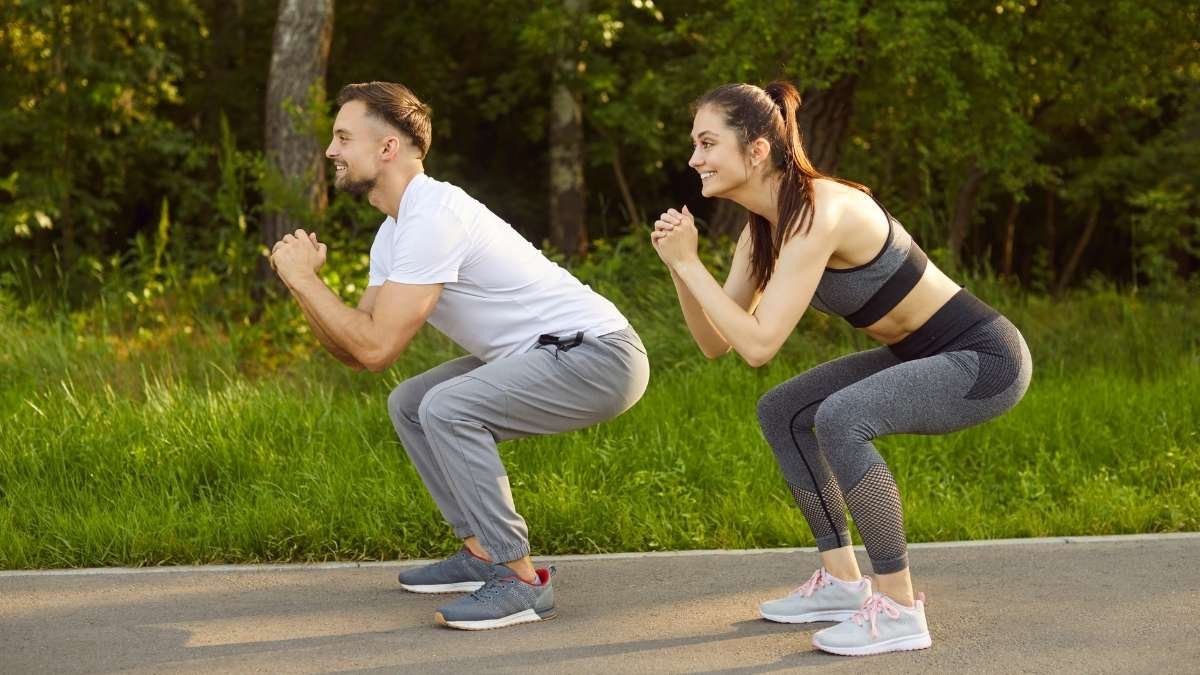
- Who It’s For: Anyone who has mastered the pattern from Level 1 or 2.
- The Goal: To own the movement anywhere, anytime, with just your body.
- How-To Guide:
- Follow all the cues from Level 1, but remove the chair.
- Hold your arms straight out in front of you for balance.
- Brace your core (like you’re about to be punched in the stomach) before you go down.
- Focus on two things: heels flat on the floor and chest proud the whole time.
“What If…?” — A Guide to Your Biggest Concerns
I hear you. You still have those “what if” questions. Let’s tackle the two biggest ones.
“What if I have bad knees?”
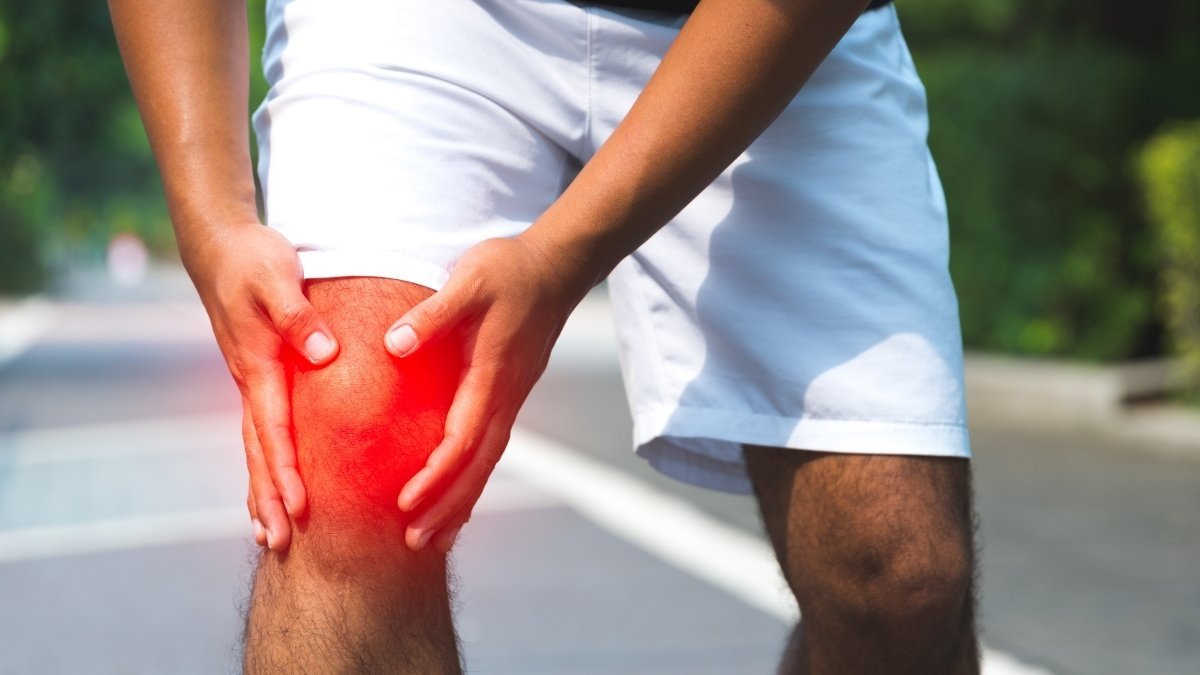
This is the number one question, and the pain is real. But it’s almost always a symptom of poor form or weakness in the muscles around the knee, not a sign that the squat itself is bad.
As Coach Dan John once told a trainee, “Squats don’t hurt your knees; what you are doing hurts your knees.” It’s the pattern, not the movement.
So, what to do?
- Option 1: Modify the Squat. Never push through sharp pain. Instead, change the exercise. Try a Box Squat (like the chair squat, but you know you’re controlling the depth) or a Stability Ball Wall Squat (place a big exercise ball between your back and a wall and slide down). Both take a ton of stress off the knees.
- Option 2: Build Supporting Muscles. If squats still cause pain, stop. Don’t squat. Instead, focus on “squat-free” exercises to strengthen the muscles that support the knee. These include Glute Bridges, Step-Ups (starting on a very low step), and Wall Sits (an isometric hold).
“What if I’m over 60? Is it too late?”
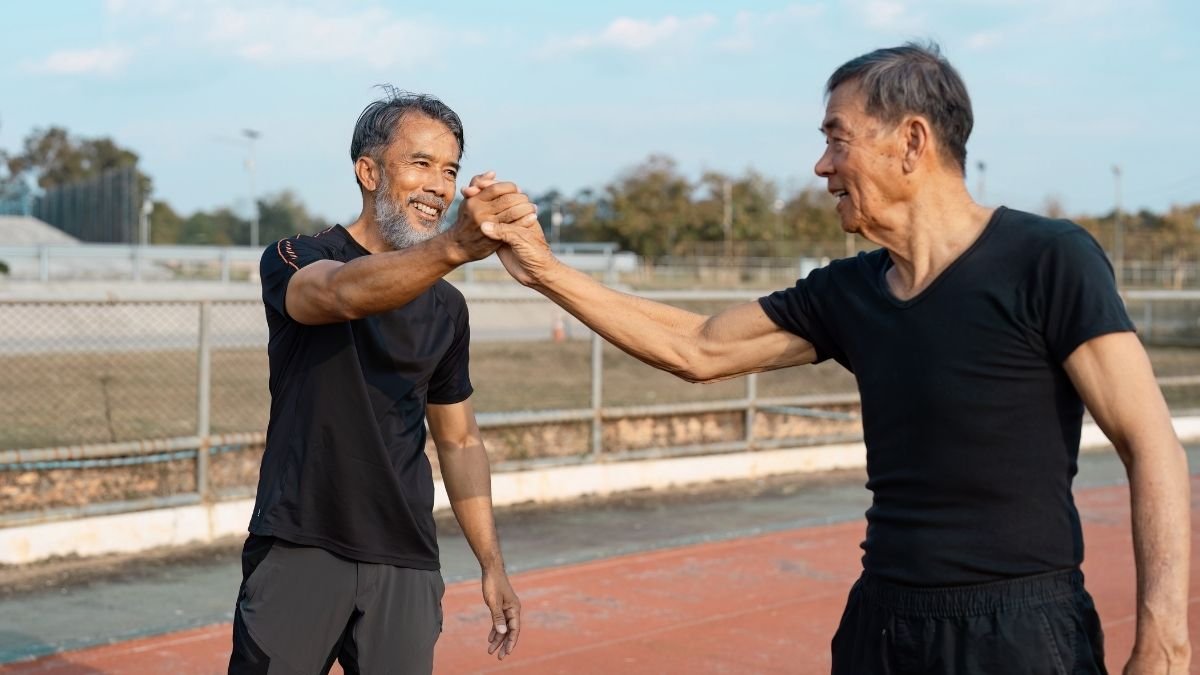
I want to be crystal clear on this: It is unequivocally never too late to start building muscle.
The real risk is not lifting, which just guarantees that sarcopenia will continue.
Your body’s ability to adapt is incredible. A 2019 study from the University of Birmingham gave us the most hopeful proof: they took older adults in their 70s and 80s who had never exercised regularly and had them start a resistance training program. When they biopsied their muscle, they found that their muscle cells had the same cellular-level ability to build mass as highly trained “master athletes” of the same age.
Your muscles haven’t forgotten how to grow. They’re just waiting for the signal.
Need a Little Help Getting Started? Look Into These.
I get it—starting a new routine can feel like a lot. Sometimes, having the right piece of gear in the corner of your room is the best motivation. You don’t need a full home gym, but a few key items can make this whole process safer, easier, and more effective. Here are a few things that align perfectly with the exercises we just talked about.
1. Bowflex SelectTech 840 Kettlebell

This is the ideal tool for that “Goblet Squat” we covered. It’s adjustable from 8 to 40 pounds with a simple dial, so you can start light and get stronger without needing to buy a whole rack of kettlebells. It’s a fantastic, space-saving option for beginners.
2. Lifepro Adjustable Dumbbells Set
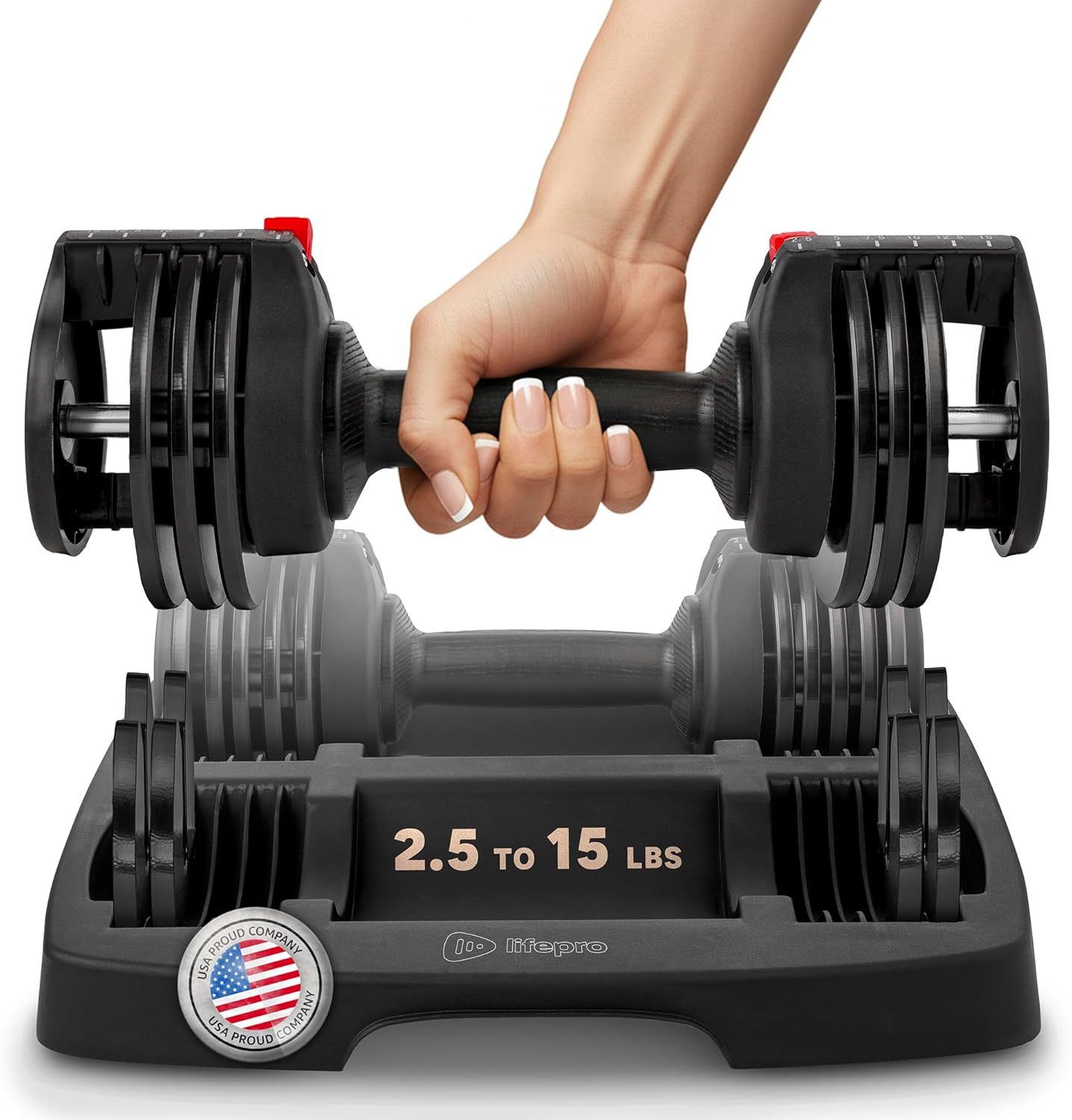
If you prefer a dumbbell, this is a great alternative for goblet squats. A single dumbbell adjusts from 10 to 55 pounds in small 2.5 or 5-pound jumps. This versatility is perfect for progressing on squats and other exercises for your whole body.
3. Balance from the 3-in-1 Foam Plyo Box

Remember the “Chair Squat” and “Box Squat” modifications? This is the dedicated tool for that. It’s a soft, high-density foam box, so you don’t have to worry about banging your shins. You can just flip it to get three different heights (like 20″, 24″, and 30″) to safely control your squat depth as you get stronger.
4. Renoj Resistance Band

If you’re worried about your knees, building your glutes is key. These fabric bands are way better than the old rubber ones that snap and roll up. They are perfect for adding resistance to exercises like Glute Bridges and helping to activate those all-important hip muscles.
5. Amazon Basics High-Density Foam Roller

After you start working these new muscles, you will feel them. A foam roller is your new best friend for recovery. This is a simple, no-frills, high-density roller that’s perfect for beginners to help work out stiffness and soreness, especially in your legs and back.
The Takeaway: Your Body Is Built to Be Strong
This whole shift in science is, honestly, such good news. We’ve learned that our muscles are not just for moving us around. It is an active, essential longevity organ.
It’s your “glucose sponge,” protecting you from metabolic disease. It’s your personal “pharmacy,” releasing protective myokines that boost your brain, bones, and immune system. And the loss of this organ—sarcopenia—is one of the single greatest, and most overlooked, threats to your healthspan.
The solution isn’t some complicated, high-tech pill. It’s simple, accessible, and proven. It’s strength training. 29 And you don’t need to become a gym rat—that 2022 analysis found the sweet spot for mortality benefits was as little as 60 minutes per week.
So here’s the first step. Go find a sturdy chair. Stand up in front of it, push your hips back, and sit down slowly. Then stand back up.
You just did your first rep.
As Dr. Peter Attia says, “Never in the history of human civilization has a 90-year-old said, ‘I wish I had less muscle.'”



